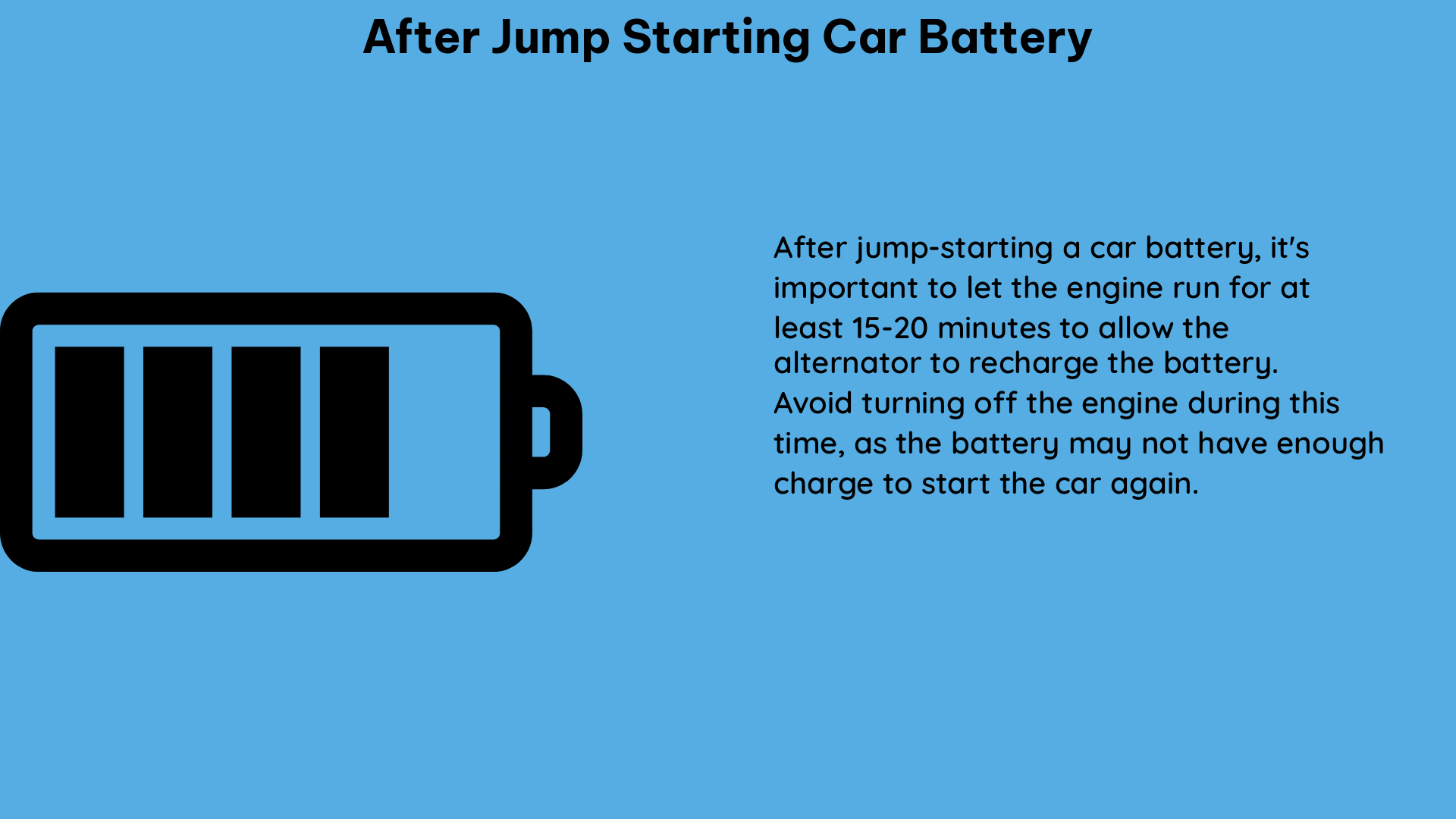When a car battery dies, jump-starting it is a common solution to get the vehicle back on the road. However, the process of jump-starting a car battery involves several critical factors that must be considered to ensure the safety and longevity of the electrical system. This comprehensive guide will delve into the technical details of current flow, recharge time, and the impact on the alternator after jump-starting a car battery.
Current Flow During Jump Start
The current flow during a jump start is a crucial factor to monitor, as it can have a significant impact on the electrical components of the vehicle. The amount of current flowing between the two batteries is determined by several variables:
-
Battery State of Charge: The state of charge of the battery being charged (the dead battery) will directly affect the current flow. A completely depleted battery will draw a higher current compared to a partially charged battery.
-
Charging Circuit Resistance: The resistance of the charging circuit, including the jumper cables, battery terminals, and vehicle wiring, will also influence the current flow. Shorter, thicker cables with low resistance will allow for higher current flow.
-
Source Battery Capacity: The capacity of the source battery (the battery providing the jump-start) will determine the maximum current it can deliver. A higher-capacity battery, such as a 500 CCA (Cold Cranking Amps) battery, can provide more current than a smaller battery.
For example, in the case of a Toyota Sienna with a dead battery being jump-started from a car with a 500 CCA battery and 8-gauge jumper cables, the current flow would be limited by the charging resistance of the Sienna’s battery. The higher the resistance, the lower the current flow, which can impact the recharge time and the alternator’s ability to maintain the battery’s charge.
Recharge Time After Jump Start

The time required to recharge the battery after a jump start is another important factor to consider. The recommended approach is to drive the car for at least 20-30 minutes to allow the alternator to fully recharge the battery. This duration is based on the following considerations:
-
Alternator Output: Modern car alternators typically have a minimum rating of 75 amps, which is sufficient to recharge a depleted battery while the engine is running. However, the actual recharge rate will depend on the alternator’s output and the vehicle’s electrical load.
-
Battery Capacity: The capacity of the battery being recharged, measured in amp-hours (Ah), will determine the amount of energy required to fully restore the battery’s charge. A larger battery will take longer to recharge than a smaller one.
-
Electrical Load: The electrical load on the alternator, such as headlights, climate control, and other accessories, will affect the rate at which the battery is recharged. Higher electrical loads will slow down the recharge process.
It’s important to note that idling the car for extended periods is not recommended, as it can put unnecessary strain on the alternator and may not provide enough charging current to fully recharge the battery.
Impact on the Alternator
The impact on the alternator during and after a jump start is another crucial consideration. The alternator is responsible for maintaining the battery’s charge and powering the vehicle’s electrical system while the engine is running.
-
Alternator Capacity: As mentioned earlier, modern car alternators typically have a minimum rating of 75 amps, which provides sufficient headroom to charge the battery even at idle speed. However, the actual output of the alternator can vary depending on the make, model, and age of the vehicle.
-
Charging Demand: When jump-starting a car, the alternator may need to work harder to recharge the depleted battery, especially if the battery is severely discharged. This increased charging demand can put additional strain on the alternator.
-
Driving Conditions: Driving the car at higher revs after a jump start will allow the alternator to charge the battery more quickly, as the alternator’s output increases with engine speed. This can help reduce the strain on the alternator and ensure a more efficient recharge process.
It’s important to monitor the battery’s charge level and the alternator’s performance after a jump start to ensure the electrical system is functioning correctly and the battery is being properly recharged.
Conclusion
When jump-starting a car battery, it’s crucial to understand the technical details of current flow, recharge time, and the impact on the alternator. By considering these factors, you can ensure a successful jump start and minimize the risk of damage to the electrical system. Remember to drive the car for at least 20-30 minutes after a jump start to allow the alternator to fully recharge the battery, and monitor the system’s performance to maintain the overall health of the vehicle’s electrical components.
References:
– Battery Question Based on Jump Starting a Car
– Can Short Circuit During Jump Start Damage the Vehicle?
– How Much Idling Needed After Jump Start to Recharge Battery?
– Does It Really Kill Your Car Battery to Jump Someone Else’s Car?
– Current When Jump Starting a Car

The lambdageeks.com Core SME Team is a group of experienced subject matter experts from diverse scientific and technical fields including Physics, Chemistry, Technology,Electronics & Electrical Engineering, Automotive, Mechanical Engineering. Our team collaborates to create high-quality, well-researched articles on a wide range of science and technology topics for the lambdageeks.com website.
All Our Senior SME are having more than 7 Years of experience in the respective fields . They are either Working Industry Professionals or assocaited With different Universities. Refer Our Authors Page to get to know About our Core SMEs.